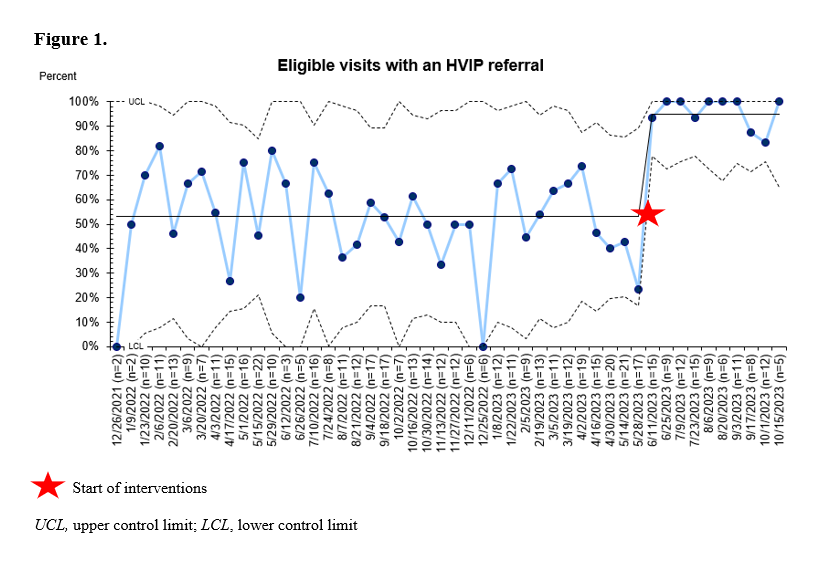Emergency Medicine
Session: Emergency Medicine 2: Operations
376 - Increasing a hospital-based violence intervention program’s services to children and families in a pediatric emergency department
Friday, May 3, 2024
5:15 PM - 7:15 PM ET
Poster Number: 376
Publication Number: 376.257
Publication Number: 376.257

Narmeen I. Khan, MD (she/her/hers)
Fellow Physician
Children's Hospital of Wisconsin
Wauwatosa, Wisconsin, United States
Presenting Author(s)
Background: Our tertiary care pediatric hospital resides in an urban, socioeconomically diverse city that has one of the highest rates of firearm injuries in the United States. Hospital-based violence intervention programs (HVIPs) reduce firearm and other violent injury recidivism rates in victims. However, significant gaps exist in the delivery of trauma-informed services to eligible families.
Objective: To understand and improve the effectiveness of delivery of HVIP services to families who present to the emergency department (ED) by:
1) Identifying the current ED referral rate to our HVIP
2) Learning about gaps in the referral process
3) Creating and evaluating the efficacy of interventions aimed at increasing the referral rate
Design/Methods: Our study population encompassed patients 0 to 18 years of age who presented to our ED with an assault-related (excluding sexual assault) concern from 12/2021 to 6/2023. Our primary outcome measure was the percentage of HVIP-eligible patients receiving a referral in the ED.
We conducted a root cause analysis by interviewing stakeholders such as HVIP staff known as crime victim advocates (CVAs), ED providers, nurses, and social workers. We learned that key drivers included electronic medical record (EMR) trigger tools for consult placement, accessibility of CVAs, and staff knowledge of HVIP eligibility and services.
We then developed 3 main interventions (implemented 6/2023):
1) An automatic page-out system in the EMR activated in triage
2) An ED touchdown space for CVAs
3) Re-education to ED providers and nurses about our HVIP
To date, these interventions have been evaluated via multiple plan-do-study-act cycles. Process measures such as number of automatic pages received are being tracked on statistical process control charts.
Results: Current state assessment revealed that our ED HVIP referral rate during the study period was 54.3% (251 referred/462 total HVIP-eligible patients). Figure 1 is a p-chart that highlights our primary outcome measure; the numerator encompasses all visits with an HVIP consult order or page and the denominator incorporates all assault-related ED visits by patients ages 0 to 18 years not in police custody. Post-implementation, the referral rate has reached 95.4% (83/87).
Conclusion(s): We identified a large volume of missed HVIP-eligible referrals and created interventions that have significantly increased our referral rate. Future goals include exploring barriers families face to accepting referrals and developing ways to improve the acceptance rate to ultimately provide necessary trauma-informed services.

